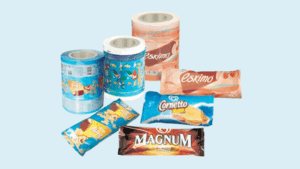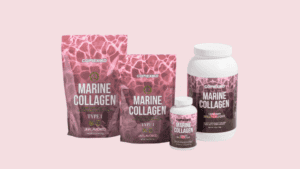Last Updated on May 31, 2023 by Packoi Team
If you genuinely want a positive environmental impact, it’s essential to understand what sustainable packaging is all about deeply.
In this article, you’ll learn more about using eco-friendly packaging to replace plastic bags and how you can make the right choices to benefit both the environment and your business.
What Is Eco-Friendly Packaging?
Eco-friendly packaging uses materials that are either easily recycled, compostable, or biodegradable. The whole idea is to provide alternatives to plastic packaging to reduce waste and minimize carbon emission contributions.
Why should it be specific to packaging?
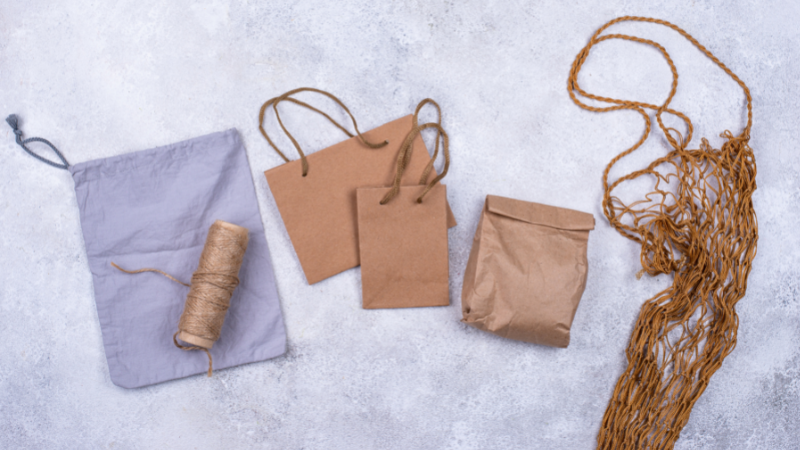
Because packaging is often disposed of after receipt or after product consumption, if there’s no action to prevent that, the landfills will soon overflow with packaging materials.
That could negatively impact the environment and worsen global warming and climate change.
By using and promoting eco-friendly packaging, we can lower the creation of product packaging worldwide. We can encourage the use of more environmentally friendly materials that are free from toxins or harmful chemicals.
Eco-Friendly VS Sustainable Packaging
When discussing the idea of eco-friendly packaging, you’ll most likely encounter the word sustainable as well.
Does this mean eco-friendly packaging is the same as sustainable packaging? Not exactly.
Eco-friendly means it doesn’t bring harm to the environment. Sustainability goes beyond being concerned about the planet.
Being sustainable means using environment-friendly measures that protect the welfare of present and future generations. At the same time, it also covers a company’s profitability so it can strengthen its pursuit of reducing the negative environmental impacts of its operations.
Think of it this way. Using biodegradable materials will give you eco-friendly packaging. But if producing that material requires a lot of energy and is not disposed of properly, then it’s not sustainable.
The Truth About Recyclable Eco-Friendly Packaging
Regarding recyclable, eco-friendly packaging claims, please don’t take them at face value. It is essential to understand what it means to ensure that your chosen methods positively impact you.
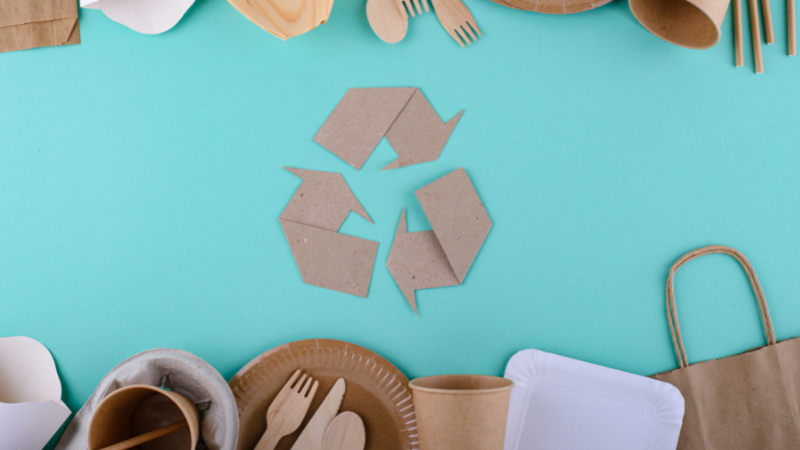
First of all, not all recyclable packaging can be recycled forever. There are materials like metal and glass that you can recycle unlimited times without compromising their original qualities. But the same isn’t true for plastic packaging. You can only recycle them so often before they become plastic waste in landfills. The same is true for paper as well.
Is It Worth It To Recycle Eco-Friendly Packaging?
In the long run, it’s still worth practicing recycling and using eco-friendly packaging. The solutions that we have right now are better than doing nothing.
But you must be aware of what happens during the recycling process.
You have to understand that some materials cost more to recycle.
Think of recycled plastic. Cleaning and sorting them isn’t just more expensive. It also consumes more energy. That means recycling will have a bigger carbon footprint if not done correctly.
We need a better eco-friendly packaging solution. But until then, let’s do our best by educating ourselves to use the best available options to recycle and be more eco-friendly.
What Is The Best Eco-Friendly Packaging?
Considering that some recycling options are more expensive or consume energy, you should use compostable packaging when applicable.

In most cases, people will reduce the use of packaging first. If it’s not necessary, they won’t use it. But if it’s not avoidable, choosing materials that can be decomposed later is better.
What Does Compostable Packaging Mean?
This type of sustainable packaging uses materials that can quickly decompose after use. The key word here is “naturally” decompose. It relies on bacteria and other microorganisms to break down its original structure. Ultimately, the material can be mixed in the soil to help fertilize it.
While compostable packaging seems ideal, not all packaging types can decompose with proper help. This is why composting facilities are being set up so people can send their packaging so the decomposition can happen faster.
So when you use this eco-friendly packaging option, educating your customers about it is essential. Use the packaging and provide instructions so they can properly dispose of the packaging.
Why Is Composting Better Than Recycling?
There’s no clear answer as to whether composting is better than recycling. It all depends on what materials you’re using. Your packaging materials will help determine which option efficiently reduces waste or carbon emissions.
As you know, there’s no one formula for sustainable packaging solutions. There are times when recycling packaging is the best option, especially when you’re forced to use plastic packaging. But if it’s unnecessary, compostable packaging is better for you.
Is Eco-Friendly Packaging Worth It?
Yes. There are many benefits when you use eco-friendly packaging. You get to lower carbon emissions, keep your packaging safe for customers, and improve your brand identity.
To fully understand why eco-packaging is worth it, you must know how irresponsible packaging harms our environment.
Plastic has produced millions of tonnes since the 1950s; more than 90% is in landfills. Since plastic takes a very long time to decompose, so it stays as litter for centuries. It ends up in landfills and threatens both land and marine life.
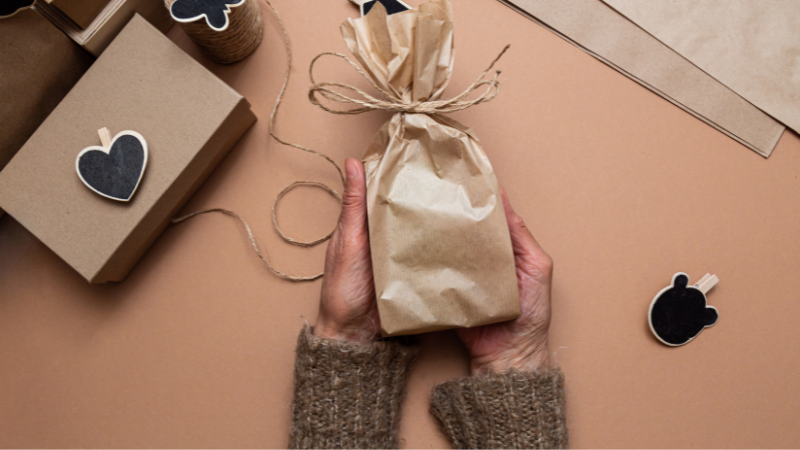
But that’s not all. Single-use plastic doesn’t just end up as litter. It also encourages the production of new plastic. That means it consumes more energy and results in higher carbon emissions. This adds to the growing global warming and climate change issues, leading to devastating hurricanes, tropical storms, etc.
The solution to this is to reduce the use of plastic by finding more eco-friendly alternatives.
Here are the different reasons why eco-friendly packaging deserves more attention.
Lower Carbon Footprint
Using eco-friendly packaging helps you reduce your carbon footprint – sometimes even that of your customers.
If you use recyclable, biodegradable, or compostable materials, you get to keep the packaging from ending in landfills. At least you can delay it.
Sustainable packaging materials also have the right qualities that prolong the value of your packaging.
For instance, if you use a rigid box as your packaging, your customer can reuse it as a storage box in their homes. This will remove the need for them to buy another packaging. The eliminated action will keep them from producing more carbon emissions.
It may seem simple, but eliminating one action has a domino effect in the supply chain that brought the packaging to the customer.
It Doesn’t Have Toxins Or Allergens
Think again if only food packaging must be free from toxins and allergens.
Committing to sustainable packaging, you become very cautious about your chosen materials. You’ll scrutinize every material to ensure it fits eco-packaging standards.
With that attention to detail, there’s no chance you’ll allow toxic materials in your packaging. You won’t let your packaging have allergens that could trigger an attack on your customers. You also won’t use synthetic materials, usually filled with harmful chemicals.
You’ll choose compostable or biodegradable packaging materials to ensure your packaging won’t cause environmental problems. After all, allergens have no room in biodegradable materials. You can be sure your customers will be safe and the environment, too.
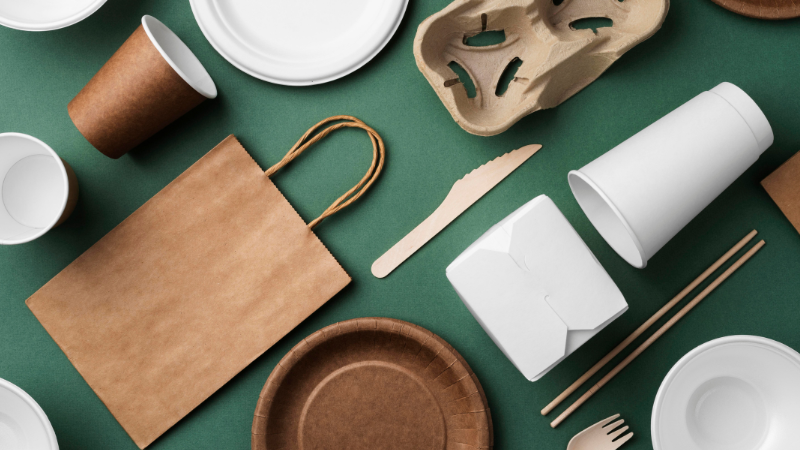
Forces You To Make It Disposable Or Reusable
One of the ways to implement sustainable packaging is to make it reusable or easily disposable.
Reusable packaging allows customers to use it as something other than what it was initially intended for. For instance, the packaging is made of metal. You used a tin can to package the cookies or food products you were selling. If you line the tin can with edible paper and print a visually appealing design, the customer can reuse that packaging.
Even after the cookies are consumed, customers can reuse the tin can to store small items or trinkets around the house.
To ensure that customers will reuse the product, put instructions along with the product. Tell them how to convert the tin can into something else, so they don’t have to throw it away.
If your packaging can’t be reused, you can instruct customers on how to dispose of it. Please put the name of nearby composting or recycling facilities where they can send the packaging.
Improves The Brand Reputation
Customers are willing to support businesses that use eco-friendly packaging if given a choice. Thanks to all the noise created by green advocates, more people are aware of the devastating condition of our environment.
It’s not surprising because people see and feel the effects of climate change. They are aware of how global warming is affecting their daily lives. Thanks to the information they get on social media, they can get ideas on how to help reverse the effects of deforestation, overflowing landfills, etc.
One of these ideas is supporting companies using eco-friendly ways to do business.
So if you can show your target market that you’re making an effort to produce eco-friendly packaging, they’ll think more highly of your brand. They’ll appreciate your efforts. There’s a higher chance that they’ll support your company.
3 Steps To Creating A Recyclable Eco-Friendly Packaging
Creating eco-friendly packaging is one of the ways that you can practice sustainability in your business. Imagine if you can make it recyclable as well. You’ll be helping the environment in more ways than you know.
However, there is a critical fact that you should know about this. While all recyclable packaging is eco-friendly, not all eco-friendly packaging is recyclable.
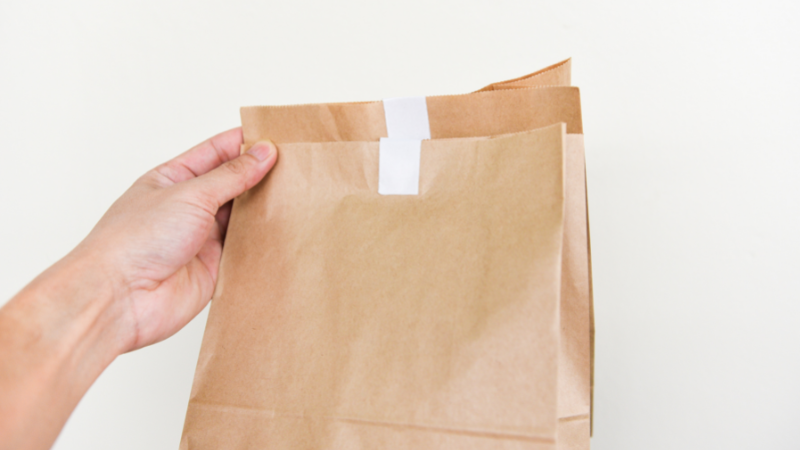
Some of them could be compostable. Others may be biodegradable. So if you want to be specific in creating recyclable, eco-friendly packaging, you must go through 3 steps.
Step 1: Educate Yourself
Education is the key to knowing the difference between the different eco-packaging options. It’ll help you find alternatives to plastic bags. You can learn more about recycled plastic and how you can be more eco-friendly in your operations.
But that’s not all. You have to realize that sustainability is getting more and more attention. As we discover new ways to be more environmentally friendly, we always need to improve it.
So if you want to contribute to the environment, you need to make an effort to educate yourself. Make sure what you’re doing has the most impact.
Of course, that’ll benefit your business as well. If you use the latest eco-friendly packaging, it’ll help you stay competitive. Your brand will surely benefit from that.
Step 2: Identify Your Needs
As you educate yourself to learn more about your packaging options, there’s one thing that you should consider.
Think about what you need.
While you need to be more environmentally friendly, you should also do it in a way that’ll benefit your business. That’s how you can be sustainable about this.
That means you need to consider 3 things.
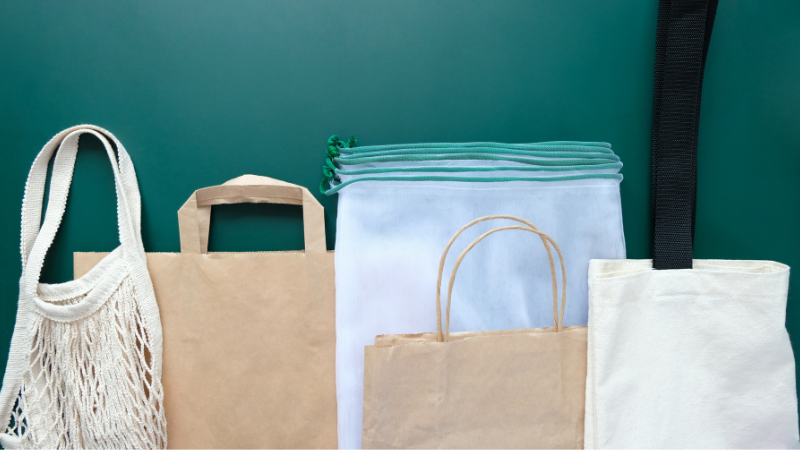
First is your brand. Everything has to be aligned with your brand. If not, then your eco-friendly efforts won’t feel genuine. Over time, you might find it hard to keep doing it because your chosen methods go against what your brand represents.
Second is your customers. Everything that you do in business should resonate with them. That’s how you can get them to be more loyal to you. Do something that you know they can relate to. If your eco-friendly solutions are new to them, that’s okay. Educate them about it. That’s how you earn both their respect and loyalty.
Third is your product. You must find eco-friendly alternatives that’ll fit what your product needs. After all, this packaging is for your product. It has to fit the specific requirements that’ll help protect your product and maintain its integrity.
Step 3: Talk To An Expert
After considering your brand, customers, and product, you should have eco-friendly packaging ideas. But sometimes, turning these ideas into a reality is still confusing.
This is where talking to an expert can help.
Look for packaging manufacturers and suppliers who can educate you about the possibilities you want to try. It’s best to focus on companies that are FSC-certified or green businesses. These companies can understand what you’re trying to do with your eco-friendly initiatives.
If they’re trying to be sustainable, you can trust they’re looking for the latest innovations in environmentally-friendly packaging. They could give you suggestions on how to meet your sustainability goals.
Examples of Recyclable, Eco-Friendly Packaging Materials
Packaging is a necessity for businesses. Even if most of it ends up in the trash, there’s no way it can be eliminated. This is why to compromise and meet sustainability standards, experts have been developing eco-friendly packaging alternatives.
Over the years, several types of eco-packaging have been developed for businesses to use. Some of them are very innovative. Others are a bit expensive.
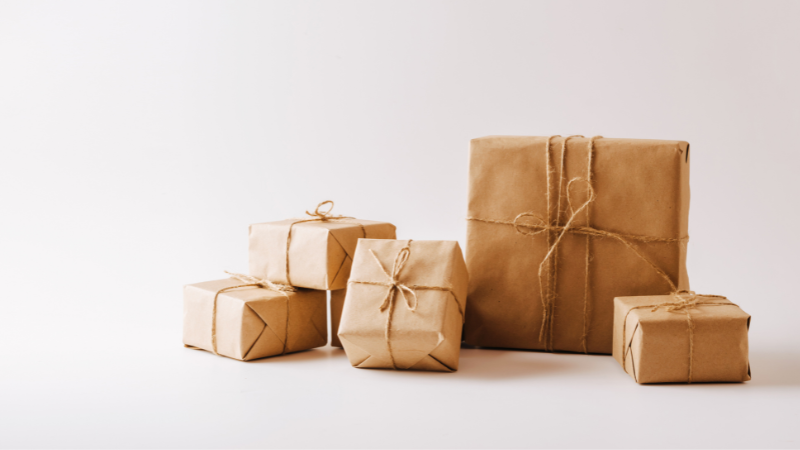
You must choose the suitable packaging material that suits your brand, customers, and product. Think about what it is that you’re trying to achieve.
Remember, you don’t have to solve all the problems at once. That’ll confuse you and make it harder to pinpoint the type of packaging that’ll suit your purpose.
Cardboard Packaging
Regarding recycled packaging, cardboard packaging is the first thing that usually comes to mind. It’s very sustainable and can reduce carbon dioxide emissions by up to 60%. That’s a huge deal, mainly if you’ve used plastic before.
While cardboard is 100% biodegradable, it’s not wholly without fault. If you understand the process of biodegradation, you’ll know that it leads to the emission of methane gas. That means cardboard packaging can come with a considerable carbon footprint.
Not only that, it can only be recycled up to 7 times. After that and the eco-packaging material’s integrity will be compromised. That might affect your product.
Despite all these, cardboard packaging remains a clear favorite among green businesses. At least, if you want your customers to immediately recognize your efforts to be more eco-friendly, using cardboard or other paper packaging is the best way to do it.
It’s also very flexible; you can shape it however you can. You can use corrugated boxes or make them more rigid to provide maximum protection for your product.
Biodegradable Plastic Packaging
The whole concept of sustainability was meant to deal with plastic pollution. But over time, we realized that there are just some packaging requirements that plastic materials can only meet.
While it’s evident that plastic will always be needed, that doesn’t mean we can’t use sustainable alternatives. There is biodegradable plastic packaging that you can continue operating without worrying about harmful environmental effects.
We now have 100% recycled plastic available, some even biodegradable. The latter means they can decompose quickly and won’t stay in landfills for years.
When it comes to the recyclability of plastic, it can only be done up to 2 to 3 times. After that, the plastic will end up in a landfill.
How can you make it more eco-friendly?
Making plastic reusable should be a good idea. If you can make it reusable and recyclable, you can keep it away from landfills for longer. What’s excellent about plastic is it can be molded into any shape you want.
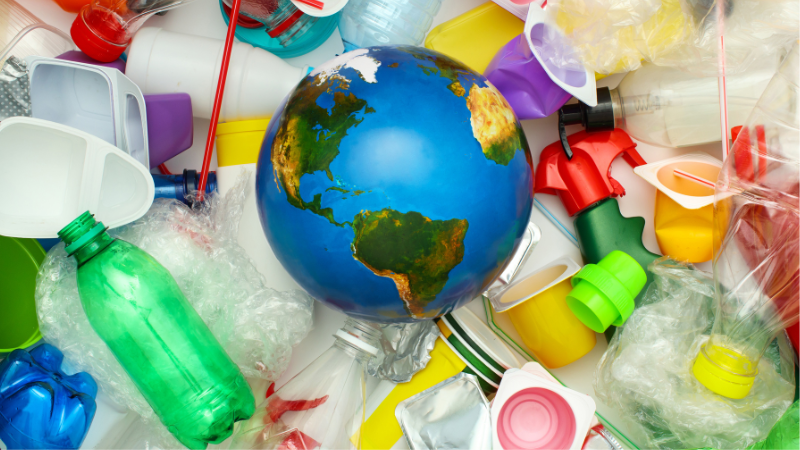
Tin Can Packaging
Metal is one of the recycled materials available for your packaging. It can be recycled infinitely, so keeping it away from being part of the growing waste in landfills is easier.
Not only that, the durability of tin cans makes them the perfect reusable packaging. If you can give it a great design, your customers would be more than willing to resume them as additional storage around the house.
Tin cans come in all shapes and sizes. But it would be best to educate yourself on what packaging is appropriate for your product. You must meet the industry’s standards, mainly if you use the packaging for food or medical use.
For instance, some rules require food packaging to be airtight to seal the freshness of the product. Some specifications ensure the nutritional value of the food will be intact until consumed.
Wooden Box Packaging
Like cardboard packaging, wooden boxes are a great way to be more eco-friendly. Wood as a raw material is sustainable. You can use it infinitely if the box has a very durable design.
But there’s one crucial thing that you need to know if you’ll be opting for this eco-packaging. Make sure you’re getting your raw materials from the right source. If not, you might find yourself contributing to deforestation that does more harm to the environment.
So when you’ve decided to use a wooden box, ensure the supplier is FSC-certified. This means they’ve been audited and deemed worthy of a certification from the Forest Stewardship Council. It only means they’re practicing the proper methods in getting the wooden materials for your packaging.
Once you’ve found the right source, make your wooden box easily reusable. Make it sturdy enough so it can last a very long time.
While wood can be recycled, you can delay that by reusing your packaging.
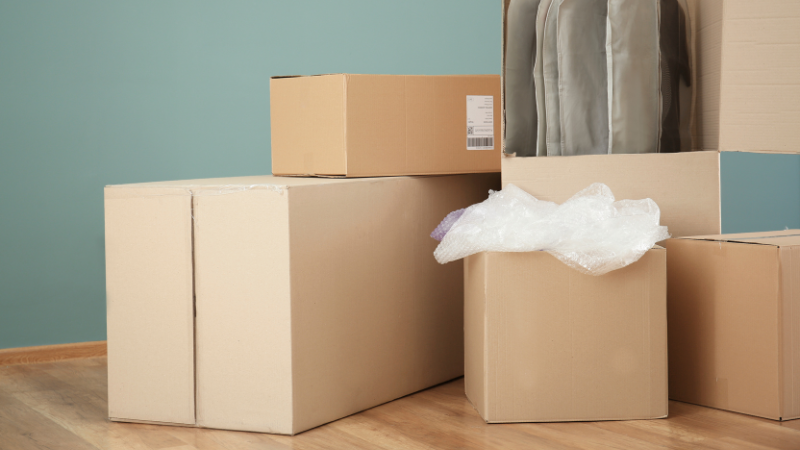
Organic Packaging
When it comes to packaging, the term organic refers to materials that come from renewable sources. That means when the raw materials are taken to produce your packaging, the head can replenish itself.
Many types of organic packaging can be great alternatives to plastic bags.
Mushroom packaging is created from agricultural waste. It’s processed and ground to fuse using mycelium or mushroom roots.
Cornstarch packaging, on the other hand, is made from corn. When processed into cornstarch, it has properties similar to plastic – making it an effective alternative to the more destructive plastic bags.
Seaweed packaging is another organic option that you can use. This biodegradable packaging comes from agar, a gelatinous substance in algae and seaweed. This option is one of the new alternatives that you can use.
Fabric Packaging
Using textiles seems like an unconventional way to package your product. But you might be surprised. It’s a great way to practice sustainability because a fabric is easy to reuse.
You can turn it into a bag that can carry a product. Your customers can use it to take their things when they go out. If you put your branding on that bag, it’ll serve as additional advertising for your company. Anywhere the customer goes, your branding goes as well.
This is why the fabric is one of the best eco-friendly packaging alternatives that you can use. It’s not just for the outer packaging. You can also use it as part of the inner packaging to help cushion the product and protect it from damage.
If you use the correct type of fabric, you can make your product more luxurious and thus increase its value in the eyes of your customers.

Glass Packaging
Using glass as a packaging material is ideal for delicate products like food, drinks, and medicines. Using glass packaging will benefit anything that has to be injected or requires protection from contamination.
But beyond that, using glass is a great way to be more eco-friendly. Like tin cans and other forms of metal packaging, this can be recycled infinitely. Even after becoming recycled materials, you don’t have to worry about the integrity of the glass you’ll use. It can retain its original qualities no matter how often you recycle it.
It’s also reusable. People can clean it and use it for something else – whether as a vase, container, etc.
Glass is made of sand, limestone, and other natural elements found on land. The raw materials are abundant, so you don’t have to worry about them running out.
And the best part? There’s no need for synthetic chemicals to create it. That means the raw materials and process of creation are both eco-friendly.
Using glass can also upgrade the value of your product. It can be considered luxurious if you put the right element in it.
Do You Want To Create An Eco-Friendly Packaging? Packoi Printing Can Help You Brainstorm Ideas.
There are many eco-friendly alternatives to the typical packaging that businesses use. But before you take your pick, it’s essential to understand what it means to be eco-friendly. You have to make sure it’s worth it.
There are so many ways you can practice sustainability in a way that fits your brand’s narrative. Stick to what’s authentic to you and your packaging so your customers can appreciate your efforts more.
If you’re trying to figure out the best packaging to use, give Packoi Printing a call. We are an FSC-certified company that’s committed to providing sustainable packing solutions.
Please share your ideas with us, and let’s brainstorm the best packaging for your product.


